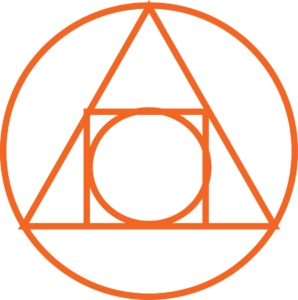ALCHEMY
Alchemy is an ancient practice that continues to this day. Ancient cultures known to practice alchemy include the Sumerians, Egyptians, Phoenicians, Chaldeans, Babylonians, Arabians, Grecians, and Romans.
For the Egyptians, alchemy was a master science, which they believed was revealed to them through their god Thoth, who was called Hermes by the Greeks.
Therefore, alchemy is a Hermetic Art. The goal of alchemy is to transform the base or common into the pure or rare. Put another way, alchemy can be considered to be the transmutation of matter into spirit. Alchemists sought the Philosopher’s Stone and the Elixir of Life, which were thought to impart higher spiritual consciousness, cure physical maladies, and confer eternal life. Alchemists believed that there was a hidden and higher order of reality, which constitutes the basis of all spiritual truths and all spirituality. Perceiving and realizing this higher order of reality was the work of alchemists – the Magnum Opus or The Great Work – the Absolute Realization. To perceive this truth requires the consciousness to be radically altered and transmuted from ordinary (lead-like) level of everyday perception to a subtle (gold-like) level of higher perception, so that every object is perceived in its perfect form – The Beauty of All Beauty, the Love of All Love, the Holy of Holies, the Highest High. This is a material and a spiritual realization at once. Alchemists work in three worlds: the spiritual, the elemental, and the material. As above, so below. As below, so above.
There are precise correspondences between the visible and invisible, matter and spirit, planets and metals. Alchemists understand this basic truth so that while they are working in their physical lab creating their physical Stones and Elixirs, they are simultaneously working subtler levels. The Great Work is realized at the apex of the triangle where the three worlds meet.
Quantum physics tells us that matter has particle-like and wave-like properties, and that the subatomic “particles” that make up matter (protons, neutrons, and electrons) are pure energy. Light also can either be a wave or a stream of particles called photons, packets of pure energy in which the amount of energy is directly proportional to the frequency of the light. New science, then, tells us that all matter, including our physical bodies, consist of forms of light and, therefore, is pure energy in essence. Matter is light whose frequency has been slowed down and lowered; matter is light that has become solid. Thus, drawing on the implications of modern physics, we can conclude that human beings are made of light held in matter. We are a light body as well as a material body.

The goal of alchemy is to transform the base or common into the pure or rare. Put another way, alchemy can be considered to be the transmutation of matter into spirit. Or matter into light. To transmute matter into light means to raise its vibrational frequency – from a base, mundane state (low frequency, dense, slow matter) to a pure exalted state (high frequency, high energy light). Within the Hermetic Arts, the Light Body is called “the immortal body,” the soma athanaton. So, when alchemists create the Philosopher’s Stone or Elixir of Life in pursuit of spiritual and physical perfection and eternal life, they are creating substances that build up their light body into a strong immortal body. This is where the three worlds meet in exalted spirituality. I continue this Great Work today. I transmute matter of the noble metals and platinum group elements into their exalted light state where they are then used to build up the immortal light body to achieve spiritual and physical perfection. This exalted material is called Ormus and effects achieved include increased spiritual perception and psychic abilities, the balancing of the left and right hemispheres of the brain, a higher perception of reality as interconnected and whole, and awakening the kundalini for a full incarnation of higher dimensional forces and energies, thereby strengthening and healing the etheric and physical body.
By Brendan Georgeson.
Alchemy
al•che•my [al-kuh- mee] (www.dictionary.com)
–noun, plural -mies for 2.
1- a form of chemistry and speculative philosophy practiced in the Middle Ages and the Renaissance and concerned principally with discovering methods for transmuting baser metals into gold and with finding a universal solvent and an elixir of life.
2- any magical power or process of transmuting a common substance, usually of little value, into a substance of great value.
Alchemy [al-kuh- mee}
1- the action of metallurgical synthesis of noble metals forming non-metallic materials for health, well-being and spiritual enhancement.
2- a scientific process of reducing elemental structure of existing noble metals to a monatomic or diatomic (Cluster) form.
Alchemy Is The Ability to Change the Frequency of thought, Alter the Harmonics of Matter, and Apply the Elements of Love to Achieve a Desired Result.
The Ancient Egyptians, David Hudson, ORMES (Orbitally Rearranged Monoatomic Elements), Manna, the Philosophers Stone, and more are pieces of what today is referred to as Alchemy. For the open minded and those conscious to observe that there are more possibilities to living than simply what we are told through regulation, packaging, and media, the world of Alchemy is embracing and enhancing. Outlandish concepts associated with Alchemy such as turning lead into gold are moving aside and making way for true research and development with great enthusiasm. As skepticism is evolving into curiosity, the way of the future is being forged with Modern Alchemy.
What is alchemy? Why are the obscure symbols and arcane principles of this ancient craft getting so much attention in modern times? How can the knowledge alchemists discovered and shared have such a strong influence in so many diverse contemporary areas as psychology, spirituality, the arts, literature, business, film making, gaming, and sciences like medicine and quantum physics?
The answer to these questions lies in the universal nature of alchemical practices and operations. Alchemy can be defined most simply as the “art of transformation.” It is concerned with the underlying principles of how things change and the basic process of transforming one thing into another.
The Great Work of alchemy has always been to speed up this natural process of perfection — to resurrect the ideal of spiritual development and activate the hidden energies that are trapped in matter. Gold in alchemy is a symbol of this hastened perfection from the inner ideal to the outer manifestation. From its origins more than 5,000 years ago in Egypt, alchemy has had a singular focus on the most fundamental principles of change in Nature. Since time immemorial, alchemists have sought to isolate the most basic essences of matter to create higher forms.
Always on the edge between science and religion, alchemy has applied methods from both cultures to work with deeper realities that transcend the words and descriptions people have given them over time. In trying to penetrate the mysteries of matter and energy, the alchemists discovered the very foundations of creation and being that is the common ground of all religions, sciences, philosophies, and psychologies.
The golden thread of alchemy weaves in and out of the tapestry of history, and it is resurfacing today in a wide variety of modern applications:
Spirituality
The most popular reason for studying alchemy today is to reconnect with the fundamental spiritual realities in the universe. In this approach to alchemy, the gold of the alchemist is not the common gold but an inner spiritual gold, and the operations of alchemy are performed in the inner laboratory of the spirit and soul.
Personal Transformation
The ancient art of alchemy offers viable, powerful methods of changing oneself and living life fully. This use of alchemical principles focuses on the application of simple alchemical techniques and operations on the personal levels of body and mind to perfect one’s character and personality. The alchemists called this working with the inner metals or changing one’s temperament.
Psychology
Alchemy gave birth to not only chemistry but also modern psychology, and the alchemists were the first to treat psychological problems as chemical imbalances in the body. Alchemical psychology also deals with the clinical treatment of character disorders in the tradition of Dr. Carl Gustav Jung.
Arts & Literature
No matter in which medium an artist works, he or she is trying to transform raw, “dead” matter into something living that speaks to those who experience it. Whether it is the sculptor’s block of stone, the painter’s canvas, the writer’s or musician’s empty page, the magic of alchemy is what’s behind the artist’s impulse to create.
Films & Gaming
Films like “2001,” “The Fifth Element,” “The Matrix,” and “Harry Potter,” are just a few examples where producers made conscious use of alchemy in the plotline. Many young people are being introduced to alchemical principles in films and software games and want to learn more.

Traditional Medicine
The physicians’ logo (the caduceus) is an ancient symbol of Hermes, the father of alchemy, and alchemists have always provided natural remedies for a wide variety of ailments. They possessed a powerful arsenal of herbs and mineral compounds with detailed knowledge of how they acted in the body, and alchemists were the first to prescribe drugs to cure disease. There is more for modern medicine to learn from alchemy.
Alternative Healing
Most alchemical bodywork modalities like chiropractics, Rolfing, Feldenkrais, bioenergetics, and polarity therapy have their origin in the work of nineteenth century alchemists seeking to isolate the life force. More ancient Oriental alchemical arts like yoga, aikido, tai chi, chi kung, tantra, acupuncture, and reiki have seen a profound increase in Western culture. Most modern holistic disciplines like homeopathy, naturopathy, Ayurveda, Chinese medicine, aromatherapy, and reflexology also trace their origin to ancient alchemical teachings
Practical Alchemy
Practical alchemy is concerned with producing tinctures, tonics, oils, compounds, and elixirs that capture healing energy. Unique laboratory work is being undertaken by more and more practitioners around the
world.
Science
According to quantum physicist Dr. Fred Wolf, Quantum Physics is the “New Alchemy,” and the two disciplines share many fundamental principles including the idea that consciousness is a force in nature. But alchemy has also had a tremendous influence on other sciences such as geology, botany, biology, and of course, chemistry.
Religion
No religious zealot ever tried harder to get closer to God than the medieval alchemists, and a very spiritual form of Christian Alchemy evolved at that time. The most basic task of the alchemist is to center himself within the consciousness of the divine creative presence so that he or she can leap beyond themselves and humbly assist in the work of God, which is the Great Work of the universe.
Fraternal Organizations
Students and initiates of alchemy and the Hermetic Arts, as well as other practices related to it such the Kabballah and Tarot, share a long and secret tradition that is still continued in contemporary organizations such as the Freemasons, Golden Dawn, Rosicrucians, Gnostics, mystery schools, and many other groups.
Social Alchemy
Alchemy has become a rallying point for a variety of movements driven by the human desire to change adverse conditions and change slavery into freedom, poverty into wealth, fear into courage, war into peace, and totalitarianism into democracy.
Everyday Life
Every one of us participates in alchemy, whether in a conscious manner (through the intentional transformation and manifesting of one’s higher nature) or through the tumult and suffering of worldly experiences that finally lead to increased awareness of the alchemical principles at work in the world.
by Dennis William Hauck (Author of The Complete Idiot’s Guide to Alchemy)

Science has struggled before to keep up with what was already common knowledge. Aspen bark boiled in water was very common for Native Americans in Colorado. The soothing, pain relieving qualities were marveled upon by the tribes, and it was a profound experience. Rituals for the trees divine qualities took place and for years, qualities could not be quantified due to the immaturity of science. It wasn’t until 1853 Charles Frederic Gerhardt, a French Chemist, was able to explain the qualities by introducing acetylsalicylic, a sister chemical to those found in Aspen trees. In 1899, Bayer Asprin was born, and the rest is history, but the Native Americans understood the power and quality long before science applied its stamp of approval. The power of these chemicals existed long before science could understand what it was.
History repeats itself or time simply goes in a circle, but society has been in this situation before. From the world being flat to walking on the moon, science is the leader in definitive information. Science is very malleable as well; it can prove an existing scientific point wrong most easily through more science.
Alchemy is science. We know certain things this very moment about it, and we will continue to learn more through additional science. Lab results, trials, tests, food grade stipulations and more. Alchemy has morphed with modern science to the point to where NASA has been involved and people all over the world are contributing to the development of M-State technology. Science has allowed us to move beyond the Native American Fire dances to begin to understand the profound effects of modern day Alchemy.